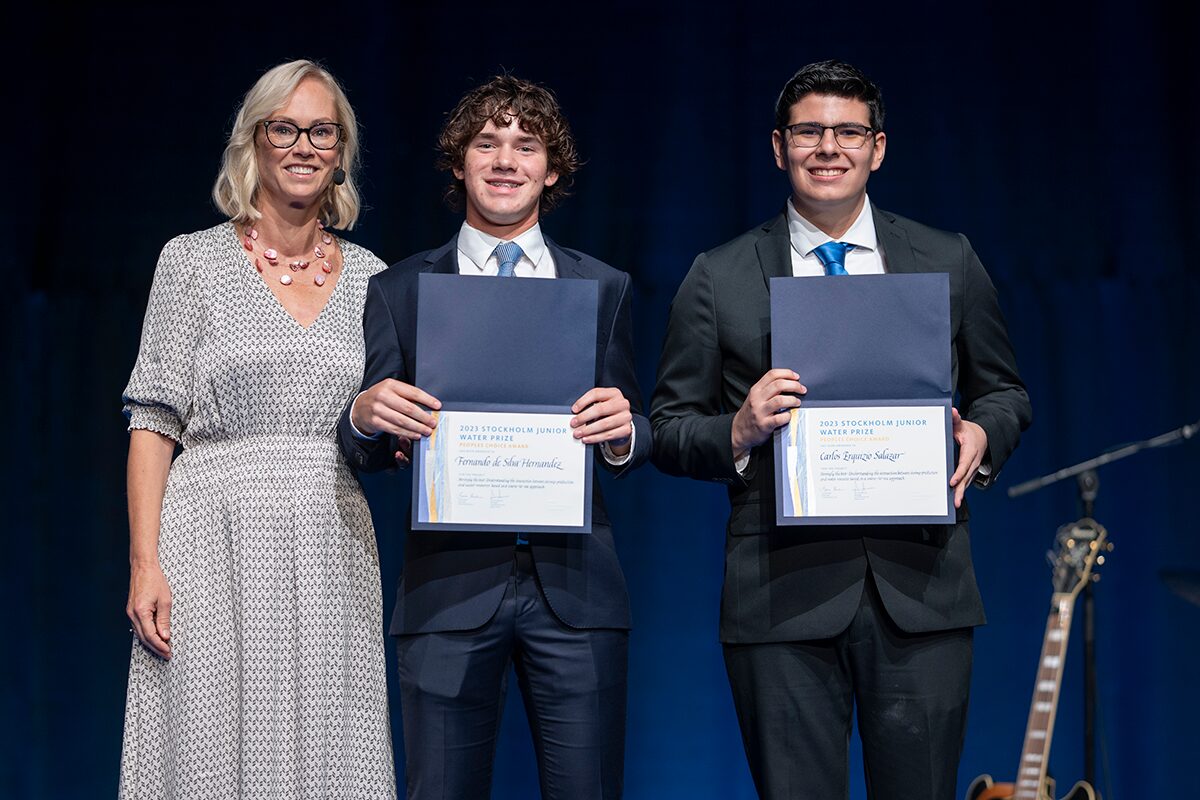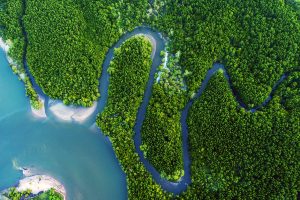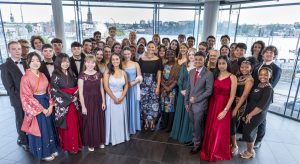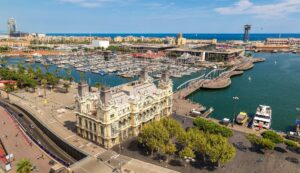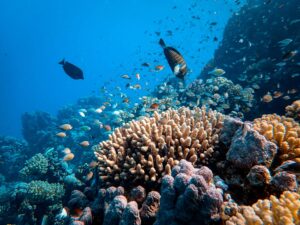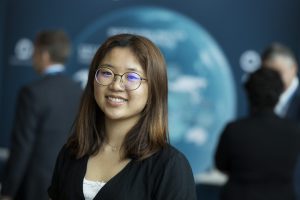The People’s Choice Award 2023 winners unpack the source-to-sea approach
“Using the source-to-sea approach as our methodology of choice, we realized that problems are much easier to unpack and address once we understood where they originally came from.”
What were the main lessons learned from applying the source-to-sea approach to addressing the issues faced in Bahía de Kino and the Gulf of California?
Both: The most important thing that we learned from using this approach was the complexity of problems that the shrimp industry generates for our maritime ecosystems. Most of the economic activities, including aquaculture, impact the well-being of our seas and basins. This becomes even more important when speaking of critical zones for biodiversity and economic development, such as with our case, in the Gulf of California. By applying the source-to-sea approach as a tool in our study, we were able to see what actions could be taken to address them.
What were the main benefits of incorporating a source-to-sea perspective in this scenario?
Carlos: Incorporating a source-to-sea perspective in this project brought several benefits. First, it enabled a better understanding of the linkages between oceans and freshwater ecosystems, recognizing the interdependence of various sectors and stakeholders involved. This fostered a shared understanding among stakeholders both upstream and downstream. A shared understanding is crucial for collaborative problem-solving and collective action. Second, we took advantage of the flexibility of the source-to-sea approach, as it can be adapted and applied across diverse contexts. This adaptability facilitated tailored solutions suited to the specific challenges of Bahía de Kino and the Gulf of California, enhancing the efficacy of addressing complex environmental issues whilst at the same time considering socio-economic factors.
Fernando: The main benefit of incorporating a source-to sea-perspective to our study, was that it enabled us to acknowledge the fact that the actions we take inland take a toll on the quality and quantity of our hydrological resources. Since our project revolved around the shrimp industry, our aim for this study was to raise awareness on the magnitude and complexity of issues for the industry as well as their impact on shared resources. This has led to unexpected connections and opportunities for collaboration amongst stakeholders.
“The main benefit of incorporating a source-to sea-perspective to our study, was that it enabled us to acknowledge the fact that the actions we take inland take a toll on the quality and quantity of our hydrological resources.”
How will the results of your work be taken forward?
Both: We received a 6-month scholarship by UNAM to work and continue our project. Most importantly, we were also invited to work on a new national pilot project in association with UNAM. The project’s aim is to confirm the efficacy of BFT used in the Gulf of California, and should take place in December. We are very enthusiastic about continuing the implementation of this idea on our coast. Also, two local shrimp farms contacted us to receive more information on the project. On a less scientific note, we are certain the relevance and success of the Stockholm Junior Water Prize will motivate more young minds to contribute and participate in these initiatives.
Would you recommend to future participants of the SWJP to include a source-to-sea approach to their projects? Why or why not?
Carlos: Future participants of the Stockholm Junior Water Prize should embrace a holistic thinking approach, by integrating the source-to-sea perspective into their projects. Implementing the source-to-sea perspective encourages us to consider aspects beyond our immediate surroundings, and comprehensively explore the entire journey of water: from its origin on land to its convergence with the sea. Moreover, the source-to-sea approach invites diverse partners into the problem-solving process, fostering innovative ideas from unexpected contributors and promoting unique solutions.
Most importantly, this perspective facilitates collaborative efforts among stakeholders along the water continuum, enabling the co-creation of sustainable, long-term solutions that address complex water challenges from a systemic viewpoint. Integrating this approach promises to enrich projects, offering a broader and more impactful perspective on water-related issues.
Fernando: Absolutely. The process we underwent to deliver this project made us realize the importance of cross-sectoral approaches. As there is a need for sustainable solutions, it is fundamental that the project structure includes a holistic approach.
How can the Action Platform for Source-to-Sea Management (S2S Platform) increase youth awareness of source-to-sea issues and support youth engagement to address these issues?
Both: The S2S Platform holds immense potential to elevate youth awareness of source-to-sea issues and actively involve them in addressing these concerns. Overall, it is a matter of facilitating the access to information. Firstly, by leveraging social media platforms, the S2S Platform can disseminate targeted, youth-oriented information, effectively reaching a broader audience and sparking interest amongst younger demographics. Secondly, conducting webinars and workshops specifically designed for youth could be instrumental. These sessions would not only educate, but also empower young individuals, providing them with tools, knowledge, and platforms to voice their perspectives and ideas regarding source-to-sea challenges.
The S2S Platform is already enhancing youth engagement by actively inviting and involving young representatives in dialogues and events focused on source-to-sea management. This inclusion ensures that youth voices are heard, valued, and integrated into decision-making processes, fostering a sense of ownership and commitment to addressing these critical environmental issues. The S2S Platform is an excellent resource, not only for only young people, but for virtually anyone who wishes to learn more about the S2S approach.
